Ryan Hall's Blog, page 143
August 4, 2017
Simpson Prepared For Controversy Of The IAAF World Championships

Photo by Jane Monti for Race Results Weekly
When Jenny Simpson takes to the track at London Stadium in Queen Elizabeth Olympic Park tomorrow night for the preliminary round of the 1500-meters at the IAAF World Championships, the 2016 Olympic bronze medalist can depend on a decade of world championships experience to steady her. All potential distractions must be blocked. She must finish in the top six of her heat or be one of the six fastest losers to advance to Saturday’s semi-finals. There are no do-overs.
“My event is full of controversy this year,” Simpson mused at a press conference today. “This isn’t unique, 2012 wasn’t unique, unfortunately. That’s something that we continue to face. But I’m here, fit and worked really hard. So, I’m excited to see how I can stack up with the competition that’s been allowed to toe the line.”
It was in this stadium at the 2012 Olympic Games that the so-called “dirtiest race” was contested. In that women’s 1500m final, both the gold and silver medalists, Asli Çakir Alptekin and Gamze Bulut of Turkey, were eventually disqualified for doping. A further four athletes –Tatyana Tomashova of Russia, Abeba Aregawi of Ethiopia (now Sweden), Natallia Kareiva of Belarus and Ekaterina Kostetskaya of Russia– were convicted of doping, either before or after the race (Kareiva and Kostetskaya were both disqualified retroactively).
Simpson, who had come into the 2012 Olympics as the reigning world champion, did not compete in that final (she had only finished tenth in her semi-final). But that race represents a touchstone for her in the fight against doping. She knows that the sport is still far from pristine, but she sees progress and hopes that the fans will help drive the clean-up.
“People are motivated to clean up the sport,” said the five-time New Balance Fifth Avenue Mile champion. “There’s been a lot of awareness internally within the sport, but I’d like to call on a lot of the fans and a lot of the people who savor their love for the sport outside of kind of the inside-baseball crew. You know, the fans are the ones who really drive the desire to see humans reach towards greater heights. So, if we can do that with just what’s inside of our bodies and how hard we can work, I think that the fans will be the next level of incorporating them into the progress towards a cleaner sport.”
Should she make the semi-finals, Simpson cannot be distracted by a special awards ceremony which will be held just prior to her race, although it could give her additional motivation. Kara Goucher, who like Simpson competed for the University of Colorado during her NCAA career, will be receiving a silver medal from the 2007 IAAF World Championships 10,000m. Goucher, 39, who is still an active athlete but who has battled injuries the last several years, will be elevated from the bronze medal position due to the disqualification of Turkey’s Elvan Abeylegesse for doping. Simpson said that the award ceremony will stir up conflicting emotions.
“It’s difficult to watch an awards ceremony that’s a decade in the correction-making,” Simpson said. “I think that my heart sinks a little bit when I know that you can be retired, and long gone, and kids, and an age away from the peak of your career and finally being given what you deserve. And so, we’ve got to fix that. This sport has to care about that and fix that, especially because as you build momentum in your career that really motivates you along the way, and really helps you along the way. So, I want to start out there’s a little bit of an ache in my heart when I see that. It’s certainly not just Kara or just the 10,000 meters. This has been something that has had to be rectified over the years in lots of different events across the runs, jumps and throws.
“But, certainly, it’s fun to be able to gather around and celebrate and make the record straight,” she continued. “I think my emotions are really evenly split between that ache and that joy. One of the things I want to say that I really appreciate and applaud is that they’re making a big deal out of it. I don’t know of another instance where they had an awards ceremony at a world championships. It seems really appropriate, and it seems exciting, and right that they would fly the medalists in and say you deserve to stand on the podium in front of the crowd and get the medal around your neck. Hopefully, this is a model for how they’ll correct things as we move on in the future.”
Simpson could face two-time Olympic 800m champion Caster Semenya of South Africa in her semi-final, another potential distraction which she must block out. The 26 year-old South African — whose body naturally produces more testosterone that most women due to a condition called hyperandrogenism — may be banned from the sport, or forced to have her testosterone level reduced through medication should the International Association of Athletics Federations (IAAF) prevail in a legal action now in front of the Court of Arbitration for Sport. It’s a very controversial issue, but Simpson must look past it.
“I’ll be honest: I’m not especially well-versed in the controversy of the issue, especially because each athlete kind of has their way of staying in your own lane and preparing for your event,” Simpson said. “I’ve been very focused very much on my own preparation and training. The announcement that she would be in our event was only, I think, maybe, two weeks ago or so? It was relatively recent. This is one of many in my long journey of having been in this sport, one of many controversies in the 1500 meters. So, that’s not new to our event to me. According to the rules, she’s allowed to toe the line so I’m going to try to beat her.”
Simpson has shown good form this season. She won her fourth straight USA 1500m title last June, and clocked a career best 4:19.98 for the mile at the London Diamond League meeting here last month, passing through the 1500m mark in 4:02.57. She declared herself fit and ready to try for her third medal at these championships where, without pacemakers, superior tactical skills play a big part in success.
“I’m happy, I’m healthy,” she said. “Really my main goal is to toe the line at the final. If you’re in the 1500 meters and you toe the line at the final, I can be tough to beat.”
(c) 2017 Race Results Weekly, all rights reserved
The post Simpson Prepared For Controversy Of The IAAF World Championships appeared first on Competitor.com.
9 American Distance Runners To Watch At IAAF World Championships
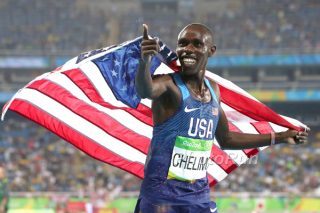
IAAF World Championships begin today in London. In the distance events, there are a few American hopefuls to keep an eye on. Watch out for these big names and see who comes away with a medal. Not sure how to watch the meet? With our viewing guide, you won’t miss any of the action.
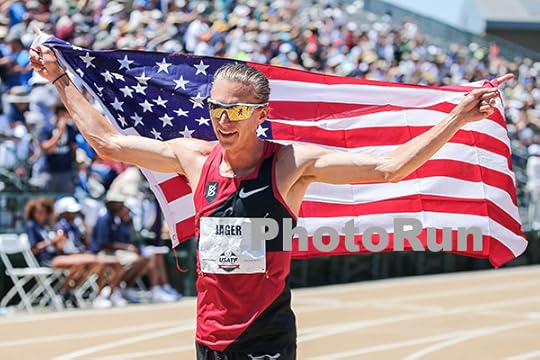
Photo: PhotoRun.net
Evan Jager—3000 meter steeplechase
One American who should come away with a gold medal is Jager. He has the world leading time in the steeplechase this year. This summer he also became the first non-African man to win a steeplechase at a Diamond League meet. Keep an eye on his American teammates Stanley Kebenei and Hillary Bor though. While they may be long shots to medal, both runners will present a challenge to a normally Kenyan dominated event.
When to watch: Heats—Aug. 6 at 5:05 a.m. EST. Final—Aug. 9 at 4:10 p.m. EST.
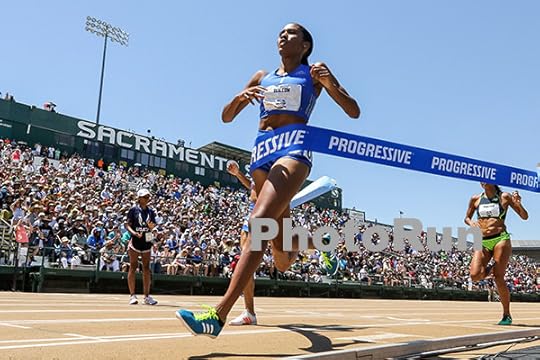
Photo: PhotoRun.net
Ajee Wilson—800 meters
The 2016 Olympic medal trio of South Africa’s Caster Semenya, Burundi’s Francine Niyonsaba and Kenya’s Margaret Wambui continued to dominate races throughout 2017 as well. Until American Ajee Wilson finished 3rd at the Diamond League meet in Monaco, breaking the American record for the 800 meters along the way. Her 1:55.61 is 3rd fastest in the world this year. If anyone could break up the Olympic trio and earn a medal, it’s likely to be Wilson.
When to watch: Heats—Aug 10. at 2:25 p.m. EST. Semis—Aug. 11 at 2:35 p.m. EST. Final—Aug. 13 at 3:10 p.m. EST.
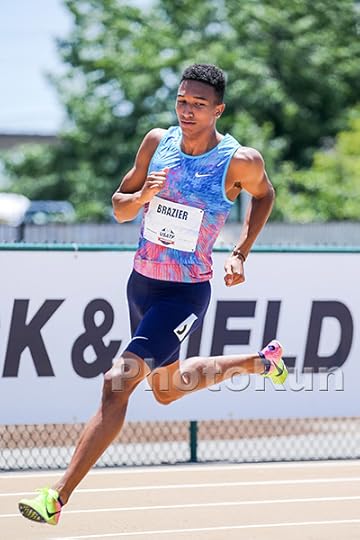
Photo: PhotoRun.net
Donovan Brazier—800 meters
At 20-years-old, Brazier is still a streaky young racer. Fast dominant performances are often followed up my major missteps, including not making it beyond the first round of the U.S. Olympic Trials last summer. However Brazier has run a 1:43.95 run this year. With world record holder David Rudisha scratched for the event, Brazier now has a real shot at the podium.
When to watch: Heats—Aug. 5 at 7:45 a.m. EST. Semis—Aug. 6 at 4:15 p.m. EST. Final—Aug. 8 at 4:35 p.m. EST.
Related: How To Watch The World Championships
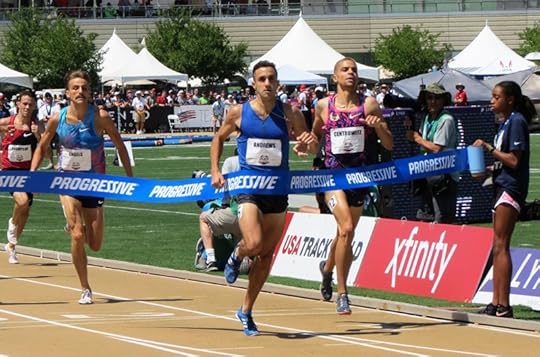
Photo: David Monti
Matt Centrowitz and Robby Andrews—1500 meters
Around this time last year, Centrowitz became the first American to win an Olympic gold medal in the 1500 meters. However after a sub-par racing season in 2017, he’s not as heavily favored to repeat that performance at World Champs. He has not run near his fastest times and was beaten at the U.S. Championships by Robby Andrews. Andrews, who never lacks confidence or a kick while racing, has an outside shot of making the top 3. However you can never count out Centrowitz’s tactical racing style, which often makes up for his lack of fitness.
When to watch: Heats—Aug. 10 at 3:25 p.m. EST. Semis—Aug. 11 at 3:10 p.m. EST. Finals—Aug. 13 at 3:30 p.m. EST.
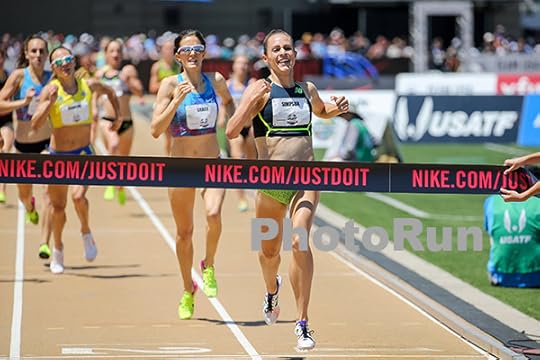
Photo: PhotoRun.net
Jenny Simpson—1500 meters
Simpson is often seen as the leader of the American resurgence in middle distance races. With World Championships gold (2011) and bronze (2013) and Olympic bronze (2016), she can never be counted out of a medal conversation. However this year, Simpson faces her toughest competition yet in the event. As long as she can keep her shoe on (unlike when she lost it in the 2015 World Championships final), Simpson should make the finals and be in the hunt.
When to watch: Heats–Aug. 4 at 2:35 p.m. EST. Semis—Aug. 5 at 2:35 p.m. EST. Finals—Aug. 7 at 4:50 p.m. EST.
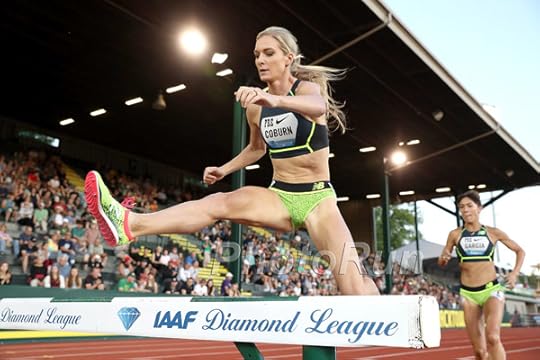
Photo: PhotoRun.net
Emma Coburn—3000 meter steeple chase
Coburn, the 6-time U.S. Champion, holds the American record in the steeplechase and has an Olympic bronze medal from last year’s Olympics. However her fastest time doesn’t even place her on the top 5 list this year. Coburn always manages to surprise with huge performances when it counts. She is in the best shape of her life and could likely break her American record if the conditions are right.
When to watch: Heats—Aug. 9 at 2:05 p.m. EST. Final—Aug. 11 at 4:25 p.m. EST.

Photo: PhotoRun.net
Molly Huddle—5000 meters and 10,000 meters
Huddle is planning to run the 5K/10K double at Worlds. Her chances to medal are definitely stronger in the longer distance, where she boasts the 4th fastest time run this year. After being out-leaned by Emily Infeld at the 2015 World Championships, costing her the bronze medal in the 10K, Huddle will race with something to prove. Meanwhile the 5K field is loaded with incredibly fast talent, including her American teammates Shelby Houlihan, Shannon Rowbury.
When to watch: 10,000—Aug. 5 at 3:10 p.m. EST.
5000: Heats—Aug. 10 at 1:30 p.m. EST. Final—Aug. 13 at 2:35 p.m. EST
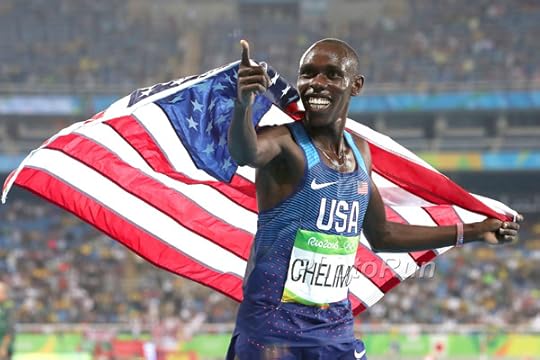
Photo: PhotoRun.net
Paul Chelimo—5000 meters
Chelimo turned in a surprising performance at the 2016 Rio Olympics, earning a silver medal in the 5K. And he easily won the U.S. Championship, running a solo 13:08 in almost 100 degree weather. While most of the talk in this event will be how gold medalist Mo Farah will fare against tough Kenyan and Ethiopian squads, Chelimo may be able to once again sneak into that group for a medal.
When to watch: Heats—Aug. 9 at 3:05 p.m. EST. Final—Aug. 12 at 3:20 p.m. EST.
The post 9 American Distance Runners To Watch At IAAF World Championships appeared first on Competitor.com.
August 3, 2017
Here’s How You Can Stay Fit When You Are Injured

You might not believe it when your IT band is giving you trouble or your plantar fasciitis is flaring up or even if you sprained your ankle, but there’s good news about being injured.
“The number of times I actually advise injured runners to stop running is very, very few,” says Colleen Brough, director of the RunLab at Columbia University in New York. “If you’re dealing with a bony stress injury, then you’re going to need to sit it out.”
But when most of the other common running injures rear their ugly heads and threaten your next race, try using these approaches to fight back and stay on track.
Rest…sort of:
When your doctor says “rest,” ask what that looks like. Because it probably doesn’t mean sit on the sofa and binge on Netflix for the next six to eight weeks. It usually means rest the injured body part, but keep up your cardiovascular fitness. “Within two weeks of no running, there’s a significant decline in your VO2 max [or aerobic capacity],” says Jason Karp, exercise physiologist and creator of the Revo2lution Running certification program.
Know what “keep running” means to doctors:
That’s not code for “stick to your training program and just hope the pain goes away.” Many injuries crop up due to less-than-ideal running form, which is often amplified when you get tired. Suppose you have a biomechanical problem that’s causing plantar fasciitis. Even if you take time off, the problem will come back once you start running again, explains physical therapist Michael Conlon, owner of Finish Line Physical Therapy in New York City. “Unless you’re addressing the biomechanical issues, the idea of rest and nothing else isn’t that effective,” he says. Make an appointment with someone who can help you correct the underlying problem that’s causing the injury. And do it now. It’s much easier to address acute issues than ones that started months ago, says Conlon.
Add and subtract:
When you’re forced to subtract some miles from running, add another type of exercise to the mix. If you had a two-hour run scheduled and you can only do 60 minutes until you hit the pain wall, then do 50 minutes of physical training and finish up on a different piece of equipment. “I’m not preoccupied with what exercise you choose,” says Jonathan Cane, co-founder of City Coach Multisport, “as long as it’s intense enough to elicit a training effect.” So if swimming isn’t your strong point, then pick something else, as long as what you choose doesn’t aggravate your injury. (It should be a linear sport, Brough points out. Basketball and tennis involve a lot of lateral cutting, which can create new injuries.)
RELATED: Injury-Proof Your Body With This 10-Minute Strength Routine
Create new patterns:
Even if part of your run trouble is that your glutes are weak, strengthening those muscles with isolated gym exercises might not be enough to get you pain-free again. You need to learn how to use that strength while you run, says Brough. “I often give running homework—cues you can use while you’re running to correct your mechanics,” she says. For instance, if someone’s knee drifts inward and contributes to knee pain, she might tell them to squeeze their butt as the foot hits the ground to better align the knee. Or maybe for the next 100 feet, they cue up a lower abdominal exercise or experiment with placing their foot flat on the ground rather than striking it with their heel first. It’s called real-time gait training, she says, and it teaches you to create new movement pathways that help you run strong, not just be strong. You can strengthen a troublesome muscle, but if you don’t learn to engage it while running, it can’t help you out.
Vary your intensity:
Mimic the original training plan’s intensity, Cane says. If it should be a hill day, do hill repeats on the bike. Tempo? Do that. Since heart rates can vary on different pieces of equipment, train by perceived exertion. True, nothing exactly mimics running—“You can’t train for a marathon solely on the bike,” Conlon says. “But even when you’re injured, you can do quality exercise and still maintain your fitness for whatever it is you’re training for.”
Be honest with yourself:
Tempted to do your race even though you probably shouldn’t? Karp suggests asking yourself: “What is the purpose of running the race when injured? What do you hope to get out of the race that’s worth the increased risk of making the injury worse?”
RELATED: This Training Structure Is The Key To Injury-Proofing Your Body
The post Here’s How You Can Stay Fit When You Are Injured appeared first on Competitor.com.
Why You Shouldn’t Take A Nap Immediately Following A Run

Once you finish a long run or hard workout, it can be tempting to just crawl into bed and take a nice, long nap. Here’s why you should avoid the bed…for at least a little bit.
“Running your fastest times are about the running but also about the little extras that you do to support your running and stay injury free,” explains Chris McClung, coach, co-owner of Rogue Running and co-host of its Running Rogue podcast. “I recommend that each runner has a post-workout or post long run routine to help the body kick start recovery; it’s 15-20 minutes of work post-run in order to help you stay healthy.”
RELATED: 4 Simple Stretches You Should Do After Every Run
This post-run routine should include things like stretching, foam rolling, strength work and mobility drills. In addition, you should be taking time to refuel your body. You want to replenish any nutrients that were lost during activity to help fuel your recovery.
“Shoot for a balanced meal within one hour of your workout,” advises Brandice Lardner, dietitian and founder of Grace Filled Plate. “Thankfully, nothing tragic happens if you miss the one-hour refueling recommendation. If you need to wait more than one hour after your workout to eat, you may notice that you become irritable and exhausted. In that case, it would be wise to consume a carbohydrate based recovery drink.”
Because of how your body uses that post-workout fuel to recover, McClung explains that once you’ve missed the window, the fuel you take in will be suboptimal. He recommends that once you are done with your post-run routine, you then schedule in time to get a balanced meal in.
RELATED: 3 Recipes For Post-Run Homemade Energy Bars
“Will going straight to a nap have a negative affect? Not in the short term,” he adds. “But, skipping the opportunity to do some of the extras that I mentioned will catch up to you eventually.”
Once you’ve checked off everything on your post-run to-do list? Feel free to hop in bed or on the couch for a snooze! McClung reveals that sleep is the most underrated and cheapest recovery tool. “Getting more of it will only help you as a runner,” he concludes.
The post Why You Shouldn’t Take A Nap Immediately Following A Run appeared first on Competitor.com.
The Case For Going Gadget-Free On Your Runs

Beep. “One mile down.”
Beep. “Two miles down, am I on pace?”
Beep. “Just four miles to go.”
Beep. “You’re going to slow, pick up the pace.”
How often do you find yourself thinking those thoughts every time your GPS watch sounds off? Or when you’re feeling exhausted mid-way through your tempo run, not simply because of the pace?
Today’s high-tech GPS watches are fantastic tools that can help you improve your speed or make you slow down when you’ve gone out too fast. But have you noticed how often you glance down or fail to enjoy the scenery?
That’s because tech, including running with music, is a constant distraction. Taking the watch out of the equation every so often frees you from the relentless voice in your head that’s perpetually evaluating your run—from your distance to time to pace. You miss a lot in nature when you’re focused on your wrist or blasting your favorite song. When you unplug, you’ll suddenly notice the sounds of birds chirping, the animals emerging in the woods, the crunch of leaves under your feet and the breeze on your face.
Any worry you had about hitting a certain pace goes out the window. You can simply enjoy the run. Suddenly you have the freedom to hit pause, without actually hitting pause on a watch. That means you can stop to take a photo or simply take a breath and enjoy the scenery. It also means you can check in with your head. Running is such a great stress reliever. Taking advantage of some miles where you just work through the problems is going to make your week go all that much better.
Plus, forgoing a watch is a great way to catch up with your running buddy instead of worrying about what pace you’re at or when you’ll hit the next mile. In fact, you may forget you’re even running during your chat session!
So next time you go on a run – really go on a run. Just leave with the shoes on your feet…and some clothes of course. Those are important, too.
Related: 2017 Summer Road Shoe Review
The post The Case For Going Gadget-Free On Your Runs appeared first on Competitor.com.
Galen Rupp To Prep For Chicago At Rock ‘n’ Roll Philadelphia
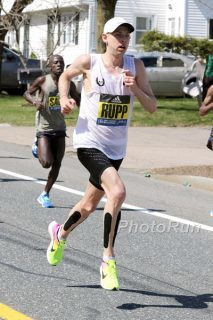
Galen Rupp placed second at the 2017 Boston Marathon. Photo: Photorun.net
Before Galen Rupp tackles his next big city marathon in the U.S., he’ll be running the American Association for Cancer Research (AACR) Rock ‘n’ Roll Philadelphia Half Marathon on Sept. 17. The half marathon will be a tune up race for the Chicago Marathon on Oct. 8.
“I’m thrilled to be running the AACR Rock ‘n’ Roll Philadelphia Half Marathon in September,” said Galen Rupp. “It is going to be a great race and is the perfect opportunity to test myself before the Bank of America Chicago Marathon.”
A three-time Olympian, Rupp has won silver in the men’s 10,000 meters in London and a bronze medal in the marathon in Rio de Janeiro last summer. Earlier this year, he made his debut in the Boston Marathon with a second-place finish of 2:09:58.
“Galen Rupp is one of America’s greatest long-distance runners and to have him race the flat, fast streets of Philadelphia will certainly be a race to watch,” said Matt Turnbull, elite athlete coordinator. “We are pleased to have him be a part of the race and invite the entire community to come and watch one of America’s best.”
AACR Rock ‘n’ Roll Philadelphia will feature two days of running with the half marathon on Sunday, Sept. 17 at 7:30 a.m., and the AACR Rock ‘n’ Roll 5K and 10K on Saturday, Sept. 16 at 7:30 a.m. and 7:00 a.m., respectively. Participants can take the “Remix Challenge” by running both Saturday and Sunday to earn the coveted Remix Challenge medal in addition to each race’s finisher medals.
The half marathon will once again start and finish in Fairmount Park and will take runners on a scenic tour of downtown Philadelphia. Course highlights include, Benjamin Franklin Parkway, City Hall, the LOVE sculpture, the historic Eastern State Penitentiary Boathouse Row, Schuylkill River and more. The 5K and 10K will also start and finish in Fairmount Park.
In true Rock ‘n’ Roll fashion, live bands, enthusiastic cheerleaders and spectators will line the race route, concluding with a celebratory finish line festival and post-race Toyota Rock ‘n’ Roll Concert Series headlined by Big Head Todd and the Monsters at Fairmount Park.
RELATED: Rock ‘n’ Roll Las Vegas Announces Goo Goo Dolls As Pre-Race Headliner
The post Galen Rupp To Prep For Chicago At Rock ‘n’ Roll Philadelphia appeared first on Competitor.com.
How To Watch IAAF World Championships—And Why You Should

Photo: photorun.net
The IAAF World Championships will take place in London from Thursday, Aug. 4 through Sunday, Aug. 13. That’s a lot of days of track and field. While many are excited, a few runners may be wondering why you should devote over a week to watching running. We highlighted how to watch, along with a few key races that you should tune in for.
How To Watch
Coverage of the World Championships will be split between NBC, NBCSN and their streaming service NBC Sports Gold. Weekend afternoon sessions will broadcast on NBC, while NBCSN will show weekday and early morning weekend coverage. Aside from replays of the marathon and tape-delayed day one coverage on NBCSN, every other event will be broadcasted live. The most coverage will be found on their streaming app. However, it is a subscription-based service, available for $69.99 for the entire track and field season. Take a look at the the meet schedule of events, as well as the broadcast schedule.
The last races of Usain Bolt and Mo Farah
Two legends in the sport are set to retire following their races at World Championships. Usain Bolt, the greatest sprinter of all time, will attempt to win one last 100 meters. Heats begin on Thursday, Aug. 4, with the final set for 4:45 p.m. EST on Saturday, Aug. Although he is not entered in the 200 meters, Bolt will likely compete for Jamaica in the 4×100 meters on Saturday, Aug. 12, in what will be his last race as a professional sprinter. Meanwhile Mo Farah is entered into both the 5,000 and 10,000 meters—and at 34, these may be his toughest races ever to win. Although he is retiring from the track, we’ll likely see Farah on the roads at the marathon distance soon. The 10,000 takes place on Thursday, Aug. 4 at 4:20 p.m. EST. The 5000 meters heats start on Wednesday, Aug. 9. Then the finals take place on Saturday, Aug. 12 at 3:20 p.m. EST.
The continued resurgence of U.S. middle distance running
There is a very strong chance that we will see a few U.S. middle distance runners walk away with medals. In the women’s 800 meters, South Africa’s Caster Semenya and Burundi’s Francine Niyonsaba have gone 1-2 in every race this season. However, American Ajee Wilson, who last month broke the American record in the 800 with a 1:55.61, has a very real shot to make the podium. Evan Jager should place in the men’s 3,000 meter steeplechase. The only question is what color his medal will be. Matt Centrowitz will look to follow up his Olympic gold with another win in the 1500 meters. And although they face tough competition in their respective events, you never know what magic Emma Coburn (3,000m steeplechase) and Jenny Simpson (1500 meters) could find on the track.
The 200/400 double
It is always exciting when an athlete attempts the 200 meters/400 meters double. At the World Championships, there are three runners looking to win both events. South Africa’s Wayde van Niekerk broke Michael Johnson’s 400-meter world record at the 2016 Rio Olympics. He will attempt to equal another of Johnson’s feats—becoming the second man to win both the 200 and 400 at World Champs. He should be untouchable in the 400. With Andre De Grasse of Canada withdrawing from the meet due to a torn hamstring, van Niekerk’s chances of winning the 200 meters just got stronger as well. His main challenger, Isaac Makwala of Botswana, is also attempting the double and has run very fast this year. On the women’s side Shaunae Miller-Uibo of Bahamas wants to be the first woman to win both the 200 meters and 400 meters at World Champs. She has an Olympic gold in the 400 meters, when she memorably out-leaned Allyson Felix at the line. However, with Felix entered in the 400 and a strong field in the 200, she has a challenge ahead of her.
Everything will be shown live
Nothing is worse than having to watch tape-delayed coverage of track meets, especially because the outcome gets spoiled on social media. Since London is only five hours ahead for east coast viewers, almost every event will be broadcasted live. Morning sessions may be a bit tough for west coasters to catch (unless you wake up at 3 a.m.), but every important final takes place during the afternoon. It’s the perfect excuse to relax on the couch after your long run and watch these amazing athletes compete.
RELATED: The 2016 IAAF World Indoor Championships In Pictures
The post How To Watch IAAF World Championships—And Why You Should appeared first on Competitor.com.
August 2, 2017
The Secret To Pairing Your Training Shoes And Racing Shoes

Photo: Oliver Baker
In The Photo: Train with Adrenaline (pictured right)—This high-mileage trainer from Brooks is stable and luxurious, serving up comfortable mile after mile. Race with Hyperion (pictured left)—As the lightest, fastest offering from Brooks, this flat gets you up on your toes with its snappy midfoot transition.
Wine goes with cheese. Beer with race finishes. Compression socks with shorts. The list of quintessential couplings goes on and on. Sometimes the selection process seems very subjective. It’s enough to make you scratch your head and wonder how the pairing was made. Who makes these calls?
Like a sommelier recommends wine pairings, I’ve been known as a shoemmelier. Given my vast collection, affection and geekiness when it comes to footwear for the fleet, I feel particularly qualified to play matchmaker. Road shoes are the white wine of running footwear, while trail shoes are the red. A sommelier wouldn’t discuss both types of wine in the same breath, so likewise this shoemmelier won’t mix road and off-road, purist that he is.
The scope of running-shoe pairings can be very broad, so let’s simply look at which training shoes go with which racing shoes. When you start training for a race, you should be prepared with at least two mainstays. The trainer should give a little more cushion and comfort for logging mileage, and the racer will see you through speed work.
Luckily brands tend to make the selection easy by making a range of shoes, and there’s no reason not to pair racers and trainers with the same logo. If you are allegiant to a particular manufacturer, it is a safe bet that the company’s racing shoe will have a similar fit and ride as its trainer. Brands tend to use the same or very similar lasts (the forms used to make shoes) and materials between their racing and training offerings.
RELATED: Summer 2017 Road Shoe Review
Here are 10 of the best pairings:
Adidas
Race: Boston Boost
Train: Supernova ST
Altra
Race: One
Train: Torin
ASICS
Race: 22
Train: GT 2000
Brooks
Race: Hyperion
Train: Adrenaline
Hoka One One
Race: Tracer
Train: Bondi
Mizuno
Race: Wave Sonic
Train: Wave Rider
New Balance
Race: 1400
Train: 1080
Nike
Race: Zoom Fly
Train: Air Zoom Pegasus
On Running
Race: Cloudflash
Train: Cloudflow
Saucony
Race: Fastwich
Train: ISO Freedom
The post The Secret To Pairing Your Training Shoes And Racing Shoes appeared first on Competitor.com.
Puma Created Brand New Spikes For Usain Bolt’s Last Race Ever
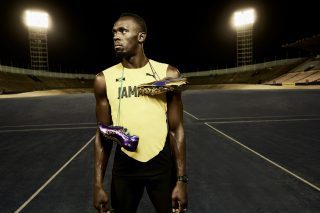
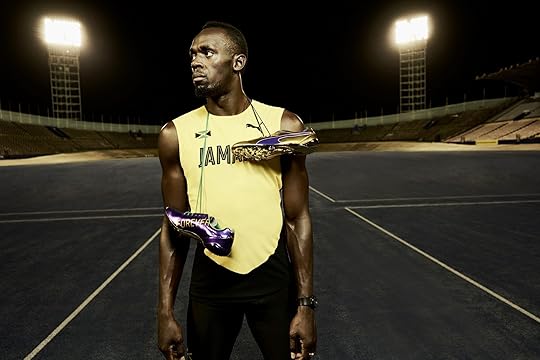
Usain Bolt is set to retire after he competes at the IAAF World Championships in London this week. In honor of his last race and to commemorate his entire career, Puma has created the Bolt Legacy Spikes. Bolt’s parents, Wellesley and Jennifer, presented the shoes to him at a ceremony that took place in London on Tuesday evening.
“Usain Bolt has been a transformative figure for track & field and brought a type of energy that the sport has never seen before,” said Bjoern Gulden, CEO of PUMA in a statement. “The way he has stayed true to his core messages, family, and fans the whole time has been what’s really resonated with people all around the globe. We are proud to have been working with Usain for so many years now and our partnership will continue long after his race this weekend.”
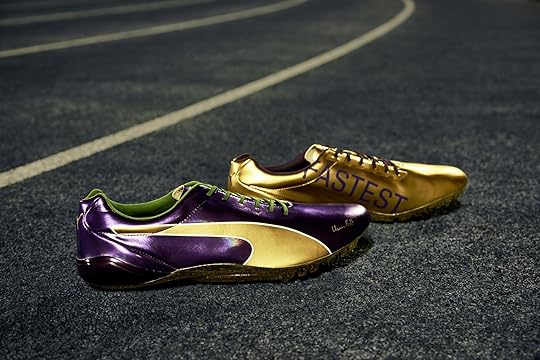
The spikes have been designed with tributes to Bolt’s victories. The right spike says “Forever”, while the left one says “Fastest.” The right spike is purple and green, in honor of Bolt’s high school colors. The left spike is gold, with a sock liner highlighting his achievements since 2002. The tongue of the spikes carries Bolt’s signature, an outline of his classic pose, and the Jamaican flag.
Bolt will wear these spikes during the World Championships. Limited pairs will also be available for purchase, with more info on that coming soon.
If you want to watch Bolt’s last race, the 100 meter heats begin on Aug. 4 at 3:20 p.m. EST. You can stream the event live with the NBC Gold Package or watch a replay starting at 7:00 p.m. EST on NBC Sports Network. The semi-finals will be on Aug. 5 at 2:05 p.m. EST. The 100m final will be live on NBC on the same day at 4:45 p.m.
RELATED: Puma’s New Shoes Give Runners A Customizable Fit
The post Puma Created Brand New Spikes For Usain Bolt’s Last Race Ever appeared first on Competitor.com.
The Top 6 Reasons Why Beginners Quit (And Why You Shouldn’t)
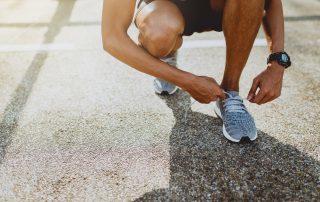
Whatever reason you recently decided to start running—maybe to lose weight or live a healthier lifestyle—chances are, you may want to quit in the near future. Wait, what? If you’re already on the verge of quitting, this probably isn’t what you wanted to hear. Here are some of the top excuses, er, reasons beginners quit running after just a few months.
Weather
It’s too hot! It’s too cold! The oppressive heat of summer, the bitter cold of winter—neither encourage outdoor activity. Time feels better spent on your couch in front of the television. Clearly, mother nature doesn’t want you to be a runner. The good news is, you have options. The first is called a treadmill. We use them to run inside during inclement weather. They can be found at any gym and are an adequate substitute for the pavement or trail. The other option is to suck it up and dress appropriately. Running in extreme weather has training benefits of its own. Over time, running in heat and cold can boost performance, making you a faster runner. Also keep in mind that unless you live in an area with year-round extreme weather, it will eventually end, so don’t give up!
Injuries
Injuries put a real damper on training. Beginners might see injury as a sign that it’s time to hang up the shoes for good. Not so fast! With proper rest and recovery, you’ll be back in the saddle in no time. To avoid injuries, train within your physical limitations. After a run, focus on stretching. Stretching can help minimize some of the soreness that usually follows a good run. Also, wearing proper shoes can help prevent common runner injuries such as knee and back pain. An expert at your local running store can help fit you.
No motivation
This often happens to runners who set lofty goals right out of the gate. This could be making a plan to run 100 miles in a month or finish a marathon in their first year of training. Not to say it’s impossible, but when reality sets in, the task often becomes too difficult. Runners then decide to throw in the towel. Start with a practical goal like training for a 5K or running 2-3 days a week while working your way up.
RELATED: 8 Tips To Stay Motivated Throughout The Year
Difficulty breathing
Unlike sitting on the couch or sleeping, running is an aerobic activity that tests your cardiovascular strength. Having difficulty breathing means your body is trying to meet the physical demands of running. But don’t let it be a deterrent. You can start by incorporating walk breaks into a run and practicing breathing techniques to get into a rhythm. The more you run, the easier breathing will become.
Boredom
You put on your shoes and head out to run the same loop as the day before and the day before that—and the day before that. You run the same distance and the same pace, exerting the same amount of energy. The only difference is your outfit (and sometimes that’s even the same, which would explain why the gym clears out every time you go to work out). That would drive anyone insane! Most beginners don’t understand the importance of varying their route, distance and speed. Try something new. Instead of your normal loop, try running on a trail or consider meeting up with a group at your local running store. Beat the boredom by switching it up!
Busy schedules
This is easily the number one excuse. Between work, family and social engagements, there’s a lot to juggle, leaving little time for your newfound hobby. But your busy lifestyle doesn’t have to trump your dreams of being a runner! With just 20-30 minutes per day a few times a week, you’ll start seeing the health benefits. That’s not a lot of time—one episode of your favorite TV show.
RELATED: How To Start Running Again After A Short Break In Training
The post The Top 6 Reasons Why Beginners Quit (And Why You Shouldn’t) appeared first on Competitor.com.
Ryan Hall's Blog
- Ryan Hall's profile
- 21 followers



